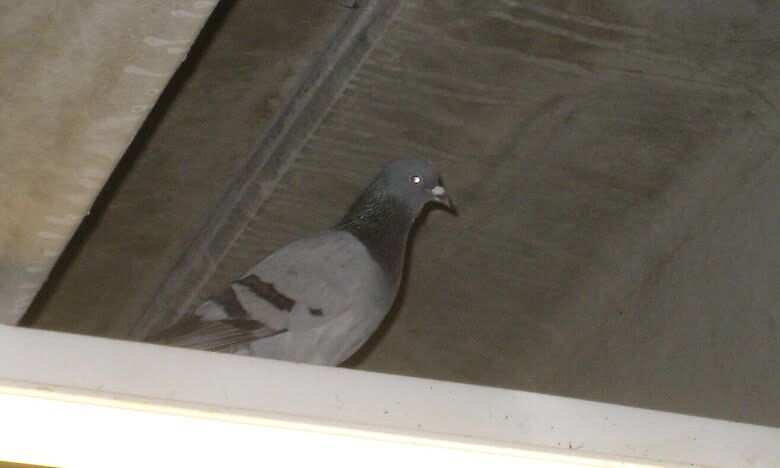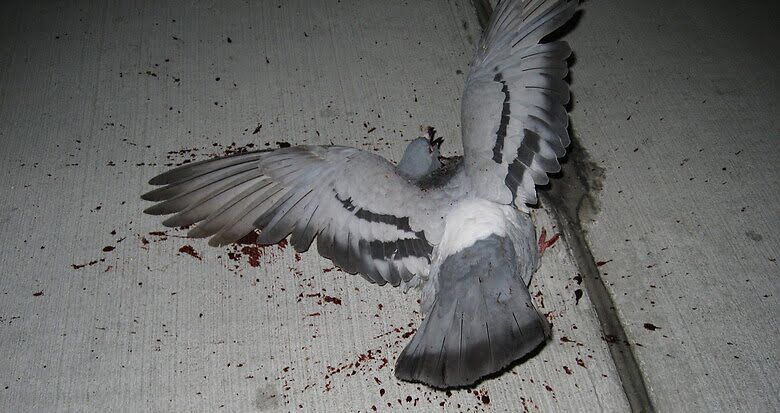About Nuisance Pigeons
Pigeons are one of the most common bird species that have spread to most continents throughout the world, and their adoptive nature and digestion mean that they can survive in many different types of habitats. While pigeons may be thought of as one species, there are actually over three hundred varieties of pigeons found around the world.

Biology
Appearance
Pigeons are pest birds that have quite a range of species, but most are relatively small at less than a foot in length. Pigeons have small heads that are on quite sturdy and stout bodies. They have thin legs with three claws, and the most common species will have gray or dark blue feathers. There are often splashes of color on the feathers too.
Habitat
Common pigeons are a species that have adapted to different conditions. With only a small number of areas in the world where pigeons are not present, their habitat varies. In the wild, the pigeons can nest in the branches of trees. In urban areas, they live in close association with humans but are not totally dependent on them. They are seen to nest in most railway stations, old unused buildings, warehouses, temples, and more.
Breeding
Nesting pigeons can breed at any time of the year, but are at their peak in the late spring and summer. Both parents contribute to raising the offspring.
Pigeons are monogamous birds. Each clutch includes either single or two bluish-white eggs and the parents alternatively sit over the eggs. Such incubation lasts for seventeen days.
Diet
Most pigeons are grain or seed eaters and feed on fruits. Blue rock pigeons eat cereals, pulses, and groundnuts.
Problems They Cause
They’re difficult to get rid of
Pigeons have a homing instinct, which makes them feel attached to their established roosting and nesting sites. This means they’re unlikely to move on out of choice. They will even resort to laying eggs on bare surfaces.
Bird droppings
If you’ve looked up and noticed a pigeon perched on a building, chances are it was surrounded by many other pigeon friends. Birds tend to stay in groups, which means that their droppings can cause significant problems.
- If it’s fresh, the droppings can be slippery which is a risk to anyone walking by.
- Bird droppings will make any building look unsightly very quickly.
- If not removed quickly, droppings can cause permanent damage.
High clean-up cost
Bird droppings and nesting materials are messy, unsightly, and dangerous. Cleaning up these often requires hiring a professional, because they have the appropriate cleaning tools and products and can access areas which are difficult to reach. If you have a pigeon problem, you may have to do this regularly, which can be quite costly.
Fire risk
Pigeons will happily make their nest out of anything. The debris they collect can cause problems for a number of reasons. Pigeons have even been known to take lit cigarettes back to their nest. Naturally, this is a huge fire risk.
Health risks
Bacteria, fungal agents, and external parasites found in the droppings of pigeons can cause serious health hazards. While most of us know how to avoid this, it poses a bigger problem if you have pets or young children who don’t know better. The agents cause serious diseases including histoplasmosis, encephalitis, salmonella, meningitis, toxoplasmosis, and many more.
Prevention Methods
There are many pigeon prevention products available. Some include gimmicks like fake plastic owls, sound machines, shiny objects, and so on. The best are products that prevent pigeons from landing on any particular area. These include spikes, needle strips, shock tracks, wires, sticky tracks, and exclusion netting.
PHYSICAL DETERRENTS: Pigeons need a flat and steady surface to land on and stoop comfortably. Making the surface of your ledges unstable will prevent them from landing on them. There are spiked and knobby landing strips that you can buy that will do the trick. This method is 100% safe for you and the bird.
BARRIERS: Another method you can use is an anti-trapping method called exclusion. Your goal to exclude the pigeons from your space, making it impossible to stoop. You can pick these up in most garden stores.
FOOD REDUCTION: Remove sources of food and water such as, outdoor pet food bowls, birdbaths, bird feeders, etc. Ensure that rubbish is properly stored and food spillage is kept to a minimum.
Other methods include:
- Application of gel products that pigeons find sticky and uncomfortable to stand on.
Professional Removal Tactics
Trapping
This method involves the use of a baited cage trap for the safe removal of the birds from a location.
- A suitable area of high pigeon activity is identified.
- The cage trap is baited with pigeon corn for approximately 7 days, allowing the pigeons free access to enter the trap, feed, and then exit. This is to make the birds feel safe while feeding within the trap, so that after 7 days when the trap is set, the maximum number of birds will be caught.
You should contact a wildlife removal professional that is trained in pigeon removal and although you will have to pay for their service, you are sure to get a professional job as well as the right advice for preventing pigeons from returning to your property.
Trapping pigeons and relocating them takes a lot of time and energy, so you will be doing yourself a world of good if you just leave it to the professionals to handle.

For information on getting rid of pigeons, see Getting Rid of Pigeons and About Nuisance Birds.
